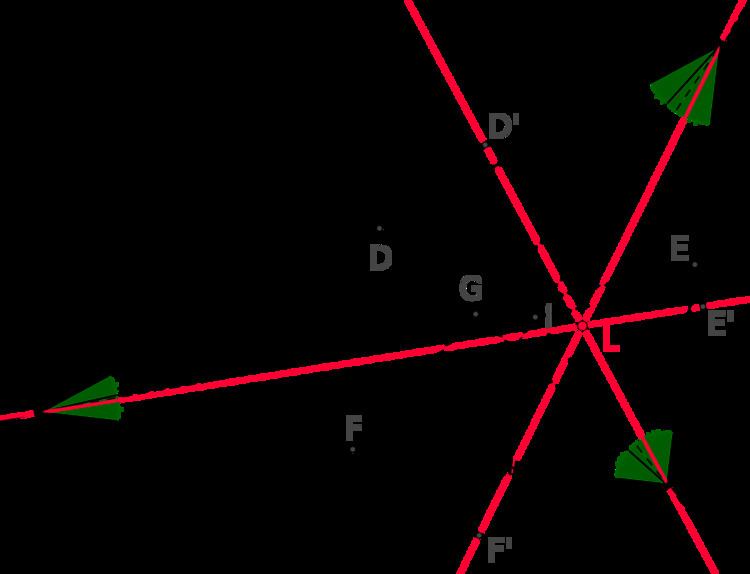 | ||
The symmedian point, Lemoine point or Grebe point is the intersection of the three symmedians (medians reflected at the associated angle bisectors) of a triangle.
Ross Honsberger called its existence "one of the crown jewels of modern geometry".
In the Encyclopedia of Triangle Centers the symmedian point appears as the sixth point, X(6). It lies in the open orthocentroidal disk punctured at its own center, and could be any point therein.
The symmedian point of a triangle with side lengths a, b and c has homogeneous trilinear coordinates [a : b : c].
The Gergonne point of a triangle is the same as the symmedian point of the triangle's contact triangle.
The symmedian point of a triangle ABC can be constructed in the following way: let the tangent lines of the circumcircle of ABC through B and C meet at A', and analogously define B' and C'; then A'B'C' is the tangential triangle of ABC, and the lines AA', BB' and CC' intersect at the symmedian point of ABC. It can be shown that these three lines meet at a point using Brianchon's theorem. Line AA' is a symmedian, as can be seen by drawing the circle with center A' through B and C.
The French mathematician Émile Lemoine proved the existence of the symmedian point in 1873, and Ernst Wilhelm Grebe published a paper on it 1847. Simon Antoine Jean L'Huilier had also noted the point in 1809.
For the extension to an irregular tetrahedron see symmedian.
